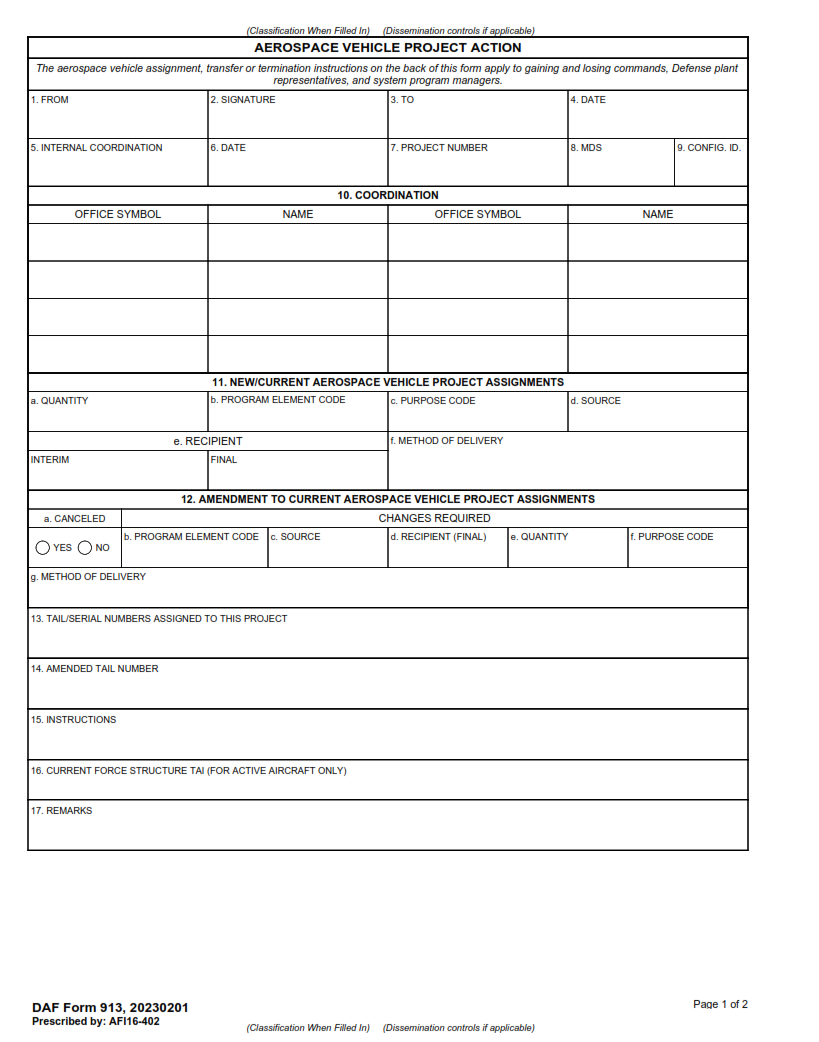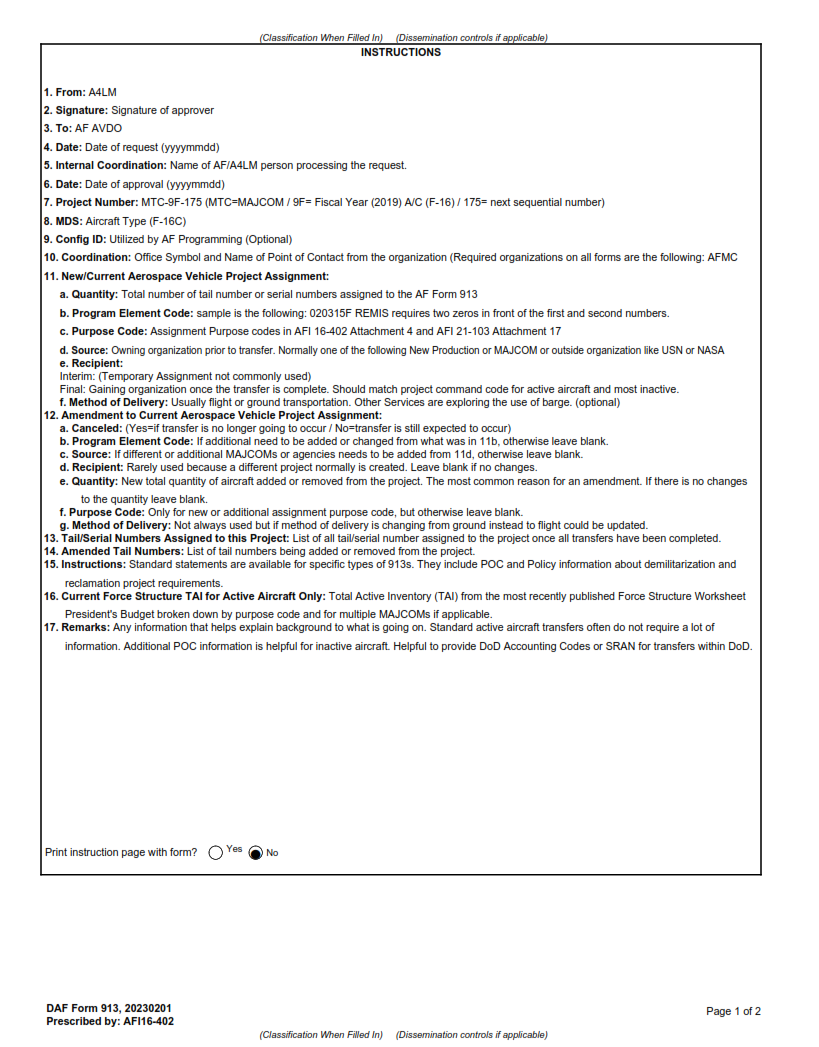ORIGINFORMSTUDIO.COM – DAF Form 913 – Aerospace Vehicle Project Action – The Defense Acquisition Board (DAB) has issued a request for information (RFI) for proposals to design, build, and test an aircraft that can travel at Mach 5.0 or faster. The aircraft is envisioned as a potential successor to the U.S. Air Force’s current fleet of fighters and bombers. The DAF 913 form is used to establish the project’s management plan, schedule, and cost.
Download DAF Form 913 – Aerospace Vehicle Project Action
| Form Number | DAF Form 913 |
| Form Title | Aerospace Vehicle Project Action |
| File Size | 37 KB |
| Form By | 01-02-2023 |
What is a DAF Form 913?
DAF Form 913 is a document that is used in the aerospace industry to manage and track project actions. This form is an essential part of the project management process, as it provides a standardized way for team members to report their progress and communicate any issues or concerns that may arise during the project’s lifecycle. The form includes several sections, including a description of the action being taken, its priority level, and its status.
One of the primary benefits of using DAF Form 913 is that it helps to ensure that all team members are on the same page when it comes to project goals and deadlines. By providing a clear outline of what needs to be done and by whom, this form helps to eliminate confusion and miscommunication among team members. Additionally, DAF Form 913 allows managers to quickly identify potential roadblocks or bottlenecks in the project timeline so they can take corrective action before these issues become major problems.
Overall, DAF Form 913 is an essential tool for anyone involved in aerospace vehicle projects. Whether you’re a manager overseeing multiple projects or a team member responsible for completing specific tasks, this form provides a straightforward way to stay organized and keep everyone informed about what needs to be done. By using DAF Form 913 consistently throughout your project’s lifecycle, you can help ensure that all stakeholders are working together efficiently towards achieving your goals.
What is the Purpose of DAF Form 913?
DAF Form 913 is a crucial document in the aerospace industry. It is used as an Aerospace Vehicle Project Action report and helps to track the progress of various projects within the industry. The purpose of DAF Form 913 is to provide a detailed overview of all actions taken during the project, including activities like design, development, testing, evaluation, and implementation.
This form also allows for tracking and monitoring of project resource allocation such as personnel and budgetary resources. With DAF Form 913 in place, stakeholders can easily monitor and assess how much time, effort or funds are being allocated towards each action item required for successful completion of a project.
In conclusion, DAF Form 913 plays an essential role in managing aerospace projects by providing concise information on completed tasks while also giving insight into what still needs to be done. Its use ensures that all parties involved have access to accurate data at any point during the project lifecycle which ultimately leads to better decision making throughout the process.
Where Can I Find a DAF Form 913?
If you are looking for a DAF Form 913, you can access it through the Department of Defense (DoD) Forms Management Program website. The form, also known as “Aerospace Vehicle Project Action,” is used to document project activities and track progress in aerospace development programs. It serves as a communication tool between program managers and other stakeholders, providing valuable information on technical issues, budgetary constraints, and risk management strategies.
To obtain the DAF Form 913, simply visit the DoD Forms Management Program website and search for “DAF Form 913” using their search function. The website provides several options for downloading or ordering forms based on your needs. Once you have obtained the form, make sure to fill it out completely with accurate information to ensure effective communication among all parties involved in your aerospace project.
In summary, locating a DAF Form 913 is simple with the help of the DoD Forms Management Program website. This essential document plays an important role in documenting project activities and ensuring successful completion of aerospace vehicle projects. Whether you need to track technical issues or budget constraints, this form will provide clear insights into your project’s progress while promoting effective communication within your team.
DAF Form 913 – Aerospace Vehicle Project Action
DAF Form 913 is a critical document used in aerospace vehicle projects to track and manage project actions. It is a comprehensive form that captures the necessary information required for each action, including the action description, due date, status, and responsible person. The form also includes fields to indicate whether the action is related to cost or schedule performance.
One of the benefits of using DAF Form 913 is that it provides project managers with a clear overview of all actions related to a specific project. Project managers can quickly review each item’s status and prioritize their efforts accordingly based on their importance and timeline. Additionally, the form ensures accountability by assigning specific individuals responsible for each action.
Overall, DAF Form 913 plays an integral role in ensuring successful completion of aerospace vehicle projects by streamlining communication between team members, improving visibility into project progress and responsibilities, and enabling effective decision-making based on real-time data. By leveraging this tool correctly, organizations can achieve better outcomes while minimizing risks associated with such projects’ complexity.
DAF Form 913 Example

